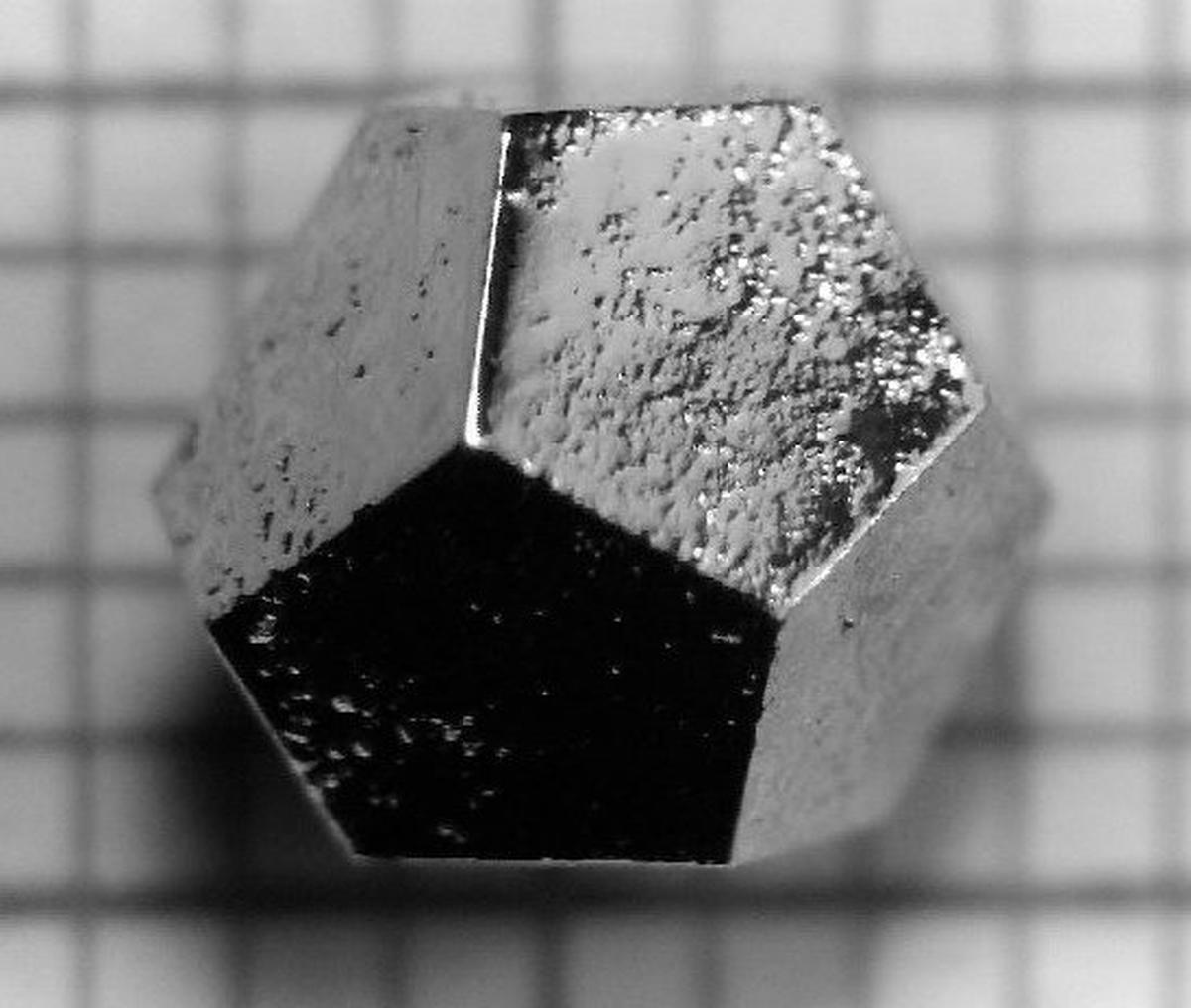Quasicrystals | 15 Feb 2023
Why in News?
Scientists have discovered a third natural source of quasicrystals in the Sand Hills of north central Nebraska, USA.
What are Quasicrystals?
- About:
- Quasicrystals are fascinating materials that possess a unique combination of properties. They are a testament to the beauty and power of irregularity in the natural world.
- Difference from Traditional Crystal:
- Unlike traditional crystals, the atoms in quasicrystals are arranged in a pattern that repeats itself at irregular intervals, rather than in a fixed, repetitive pattern.
- This deviation from the normal arrangement of atoms in solids makes quasicrystals a symbol of the power of irregularity.
- Common salt crystals, like those of Sodium chloride (NaCl), adopt a cubic pattern due to their chemical and physical properties.
- The cubic pattern allows the sodium and chloride ions to optimise for factors like density and thermal stability.
- Quasicrystals, on the other hand, form in a pattern that deviates from the cubic structure and is less optimal.
- The structure of their atomic lattice still contains the imprints of some stressful event.
- Unlike traditional crystals, the atoms in quasicrystals are arranged in a pattern that repeats itself at irregular intervals, rather than in a fixed, repetitive pattern.
- Application:
- They are used in manufacturing non-stick frying pans, needles for acupuncture and surgery, dental instruments and razor blades.
How Quasicrystals were Discovered?
- The discovery of quasicrystals was made by American-Israeli scientist Dan Shechtman in 1982 in the lab.
- Dan Shechtman received the 2011 Nobel Prize in Chemistry for discovering quasicrystals.
- The first natural quasicrystal was discovered in the Khatyrka meteorite in Russia in 2009.
- The Khatyrka meteorite is believed to have gone through several collisions in space over millions of years, which would have subjected it to intense pressure and heat.
- Inspired by these conditions, physicists conducted experiments to create new quasicrystals in the lab using "shock synthesis."
- In 2021, scientists discovered a quasicrystal in the remains of the first-ever detonated atomic weapon, the Trinity test of the Manhattan Project.
- These findings suggest that intense, fiery conditions like those experienced by the Khatyrka meteorite and the Trinity test are the birthplace of natural quasicrystals.

